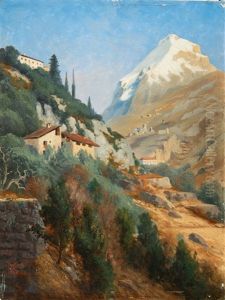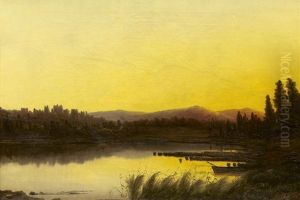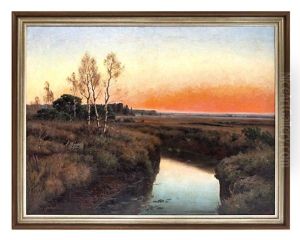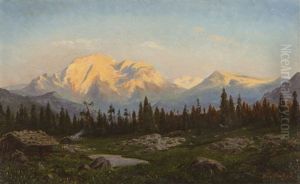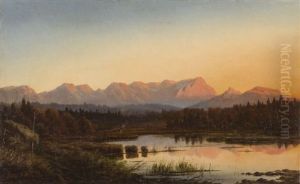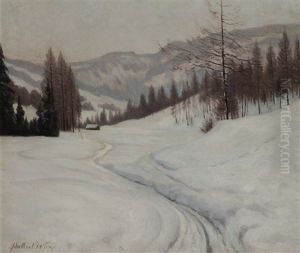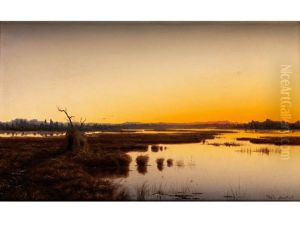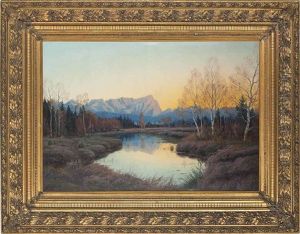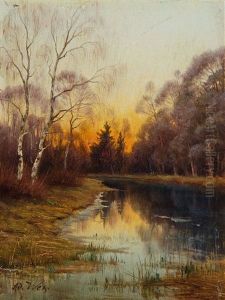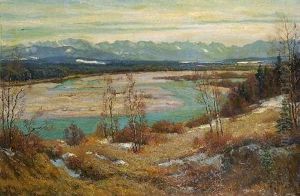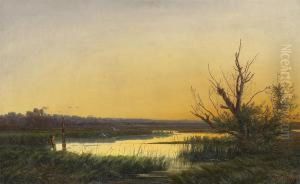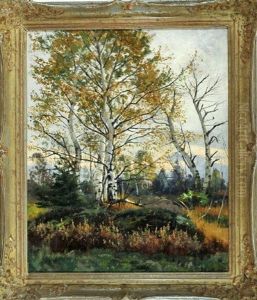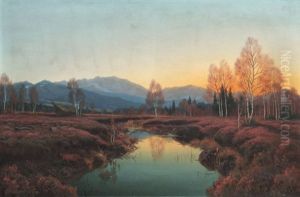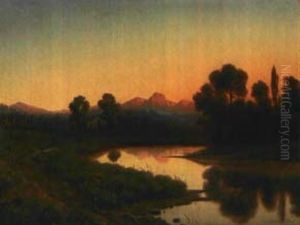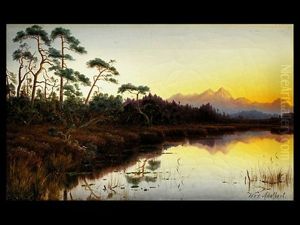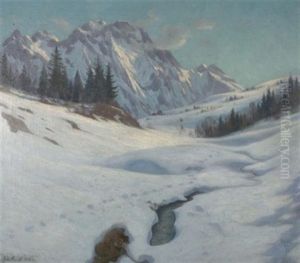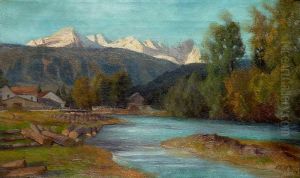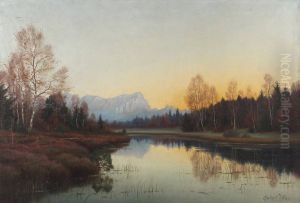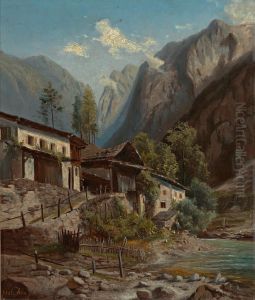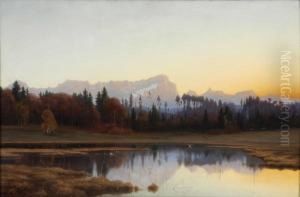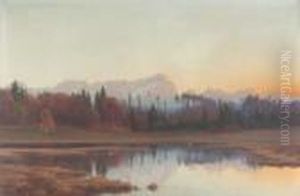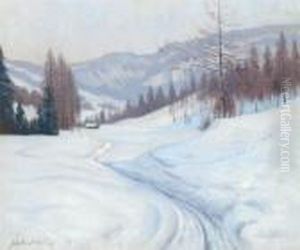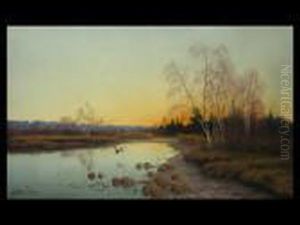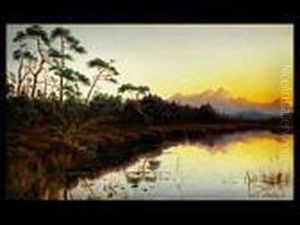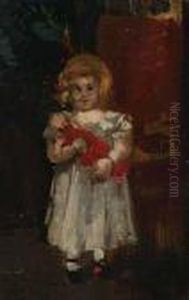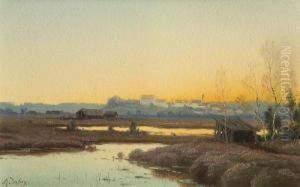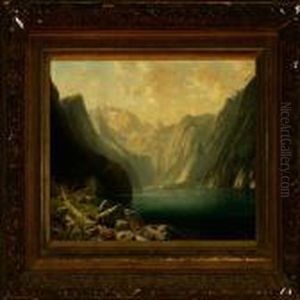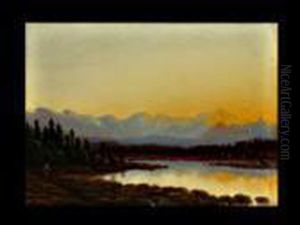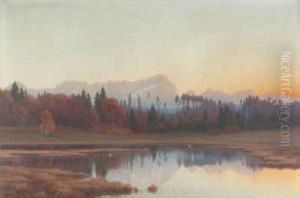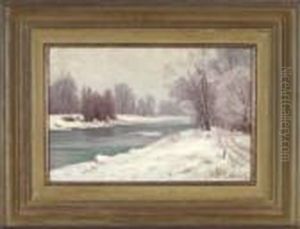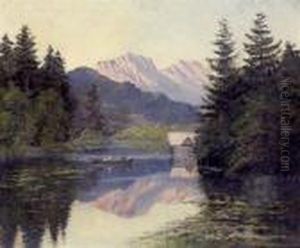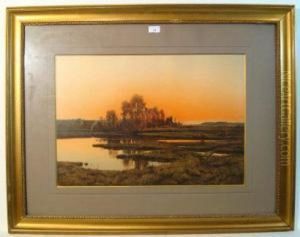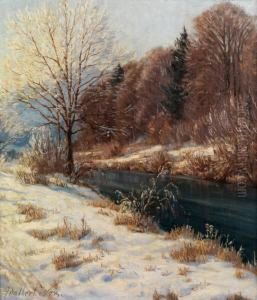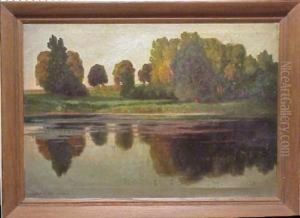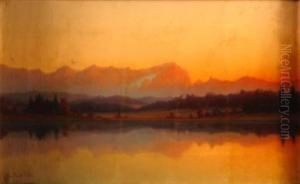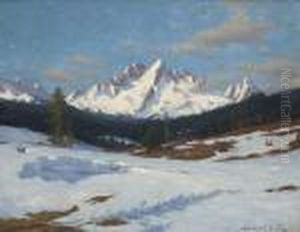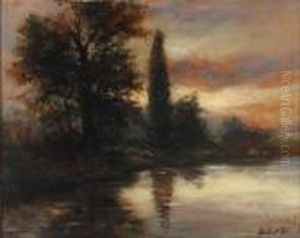Adalbert Wex Paintings
Adalbert Wex was a German painter and graphic artist known for his landscape and architectural paintings. Born on October 19, 1860, in Munich, Germany, Wex became part of the Munich School, a group of artists active in the late 19th and early 20th centuries who were recognized for their realistic and detail-oriented works.
Wex's artistic journey began with his education at the Munich Academy of Fine Arts, where he studied under influential teachers such as Wilhelm von Diez, a prominent figure in the Munich School. His style was deeply influenced by the Munich School's emphasis on realism and precision, as well as the broader European movements of Realism and later Impressionism.
Throughout his career, Wex was primarily a landscape painter, capturing the serene beauty of the German countryside, Alpine scenes, and the architectural splendor of old German cities. His works often depicted the interplay of light and shadow, with a particular focus on atmospheric effects and seasonal changes in the landscape. Wex's paintings were characterized by their meticulous detail, rich color palette, and the ability to evoke a sense of place and time.
Despite his talents, Adalbert Wex was not as widely known as some of his contemporaries. Nonetheless, his works were exhibited in various galleries and exhibitions throughout Germany, gaining him recognition among art collectors and enthusiasts of the Munich School.
Adalbert Wex passed away on November 28, 1937, in Munich. While he did not achieve widespread fame during his lifetime, his paintings remain valued for their technical skill and their contribution to the Munich School's legacy in German art history. Today, his works can be found in various art collections and are occasionally displayed in exhibitions focusing on German art of the late 19th and early 20th centuries.
